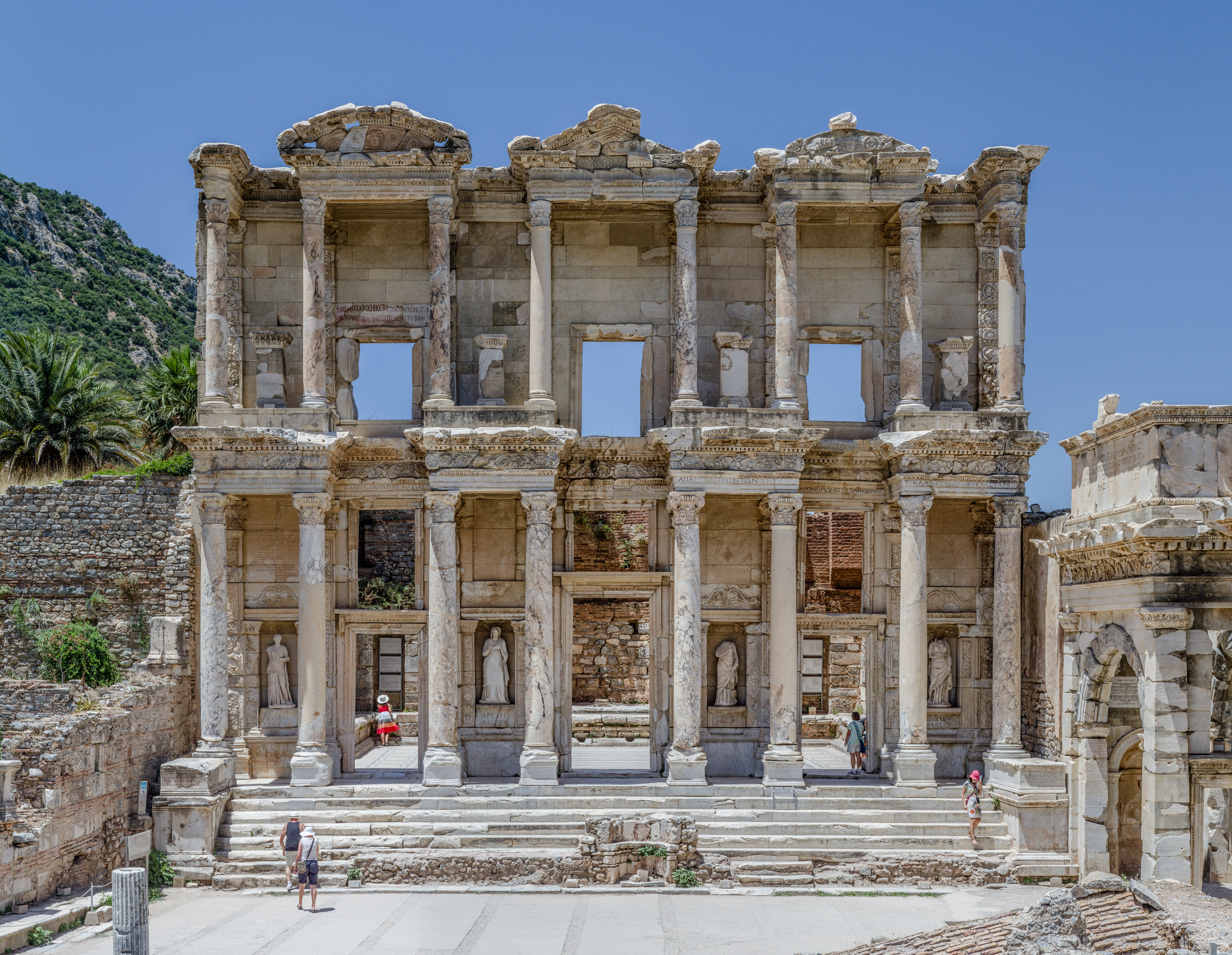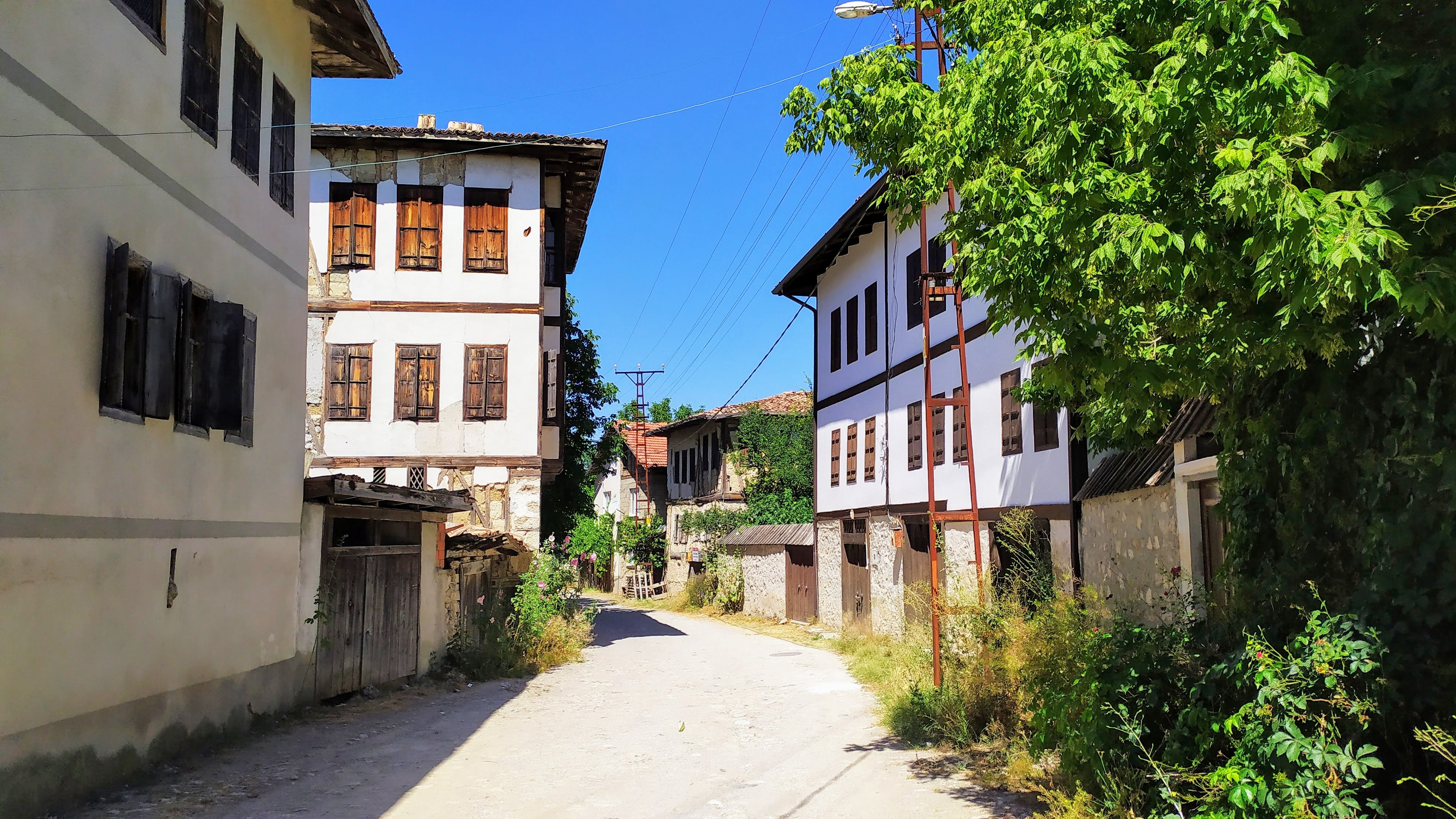|
Dibile
Dibile or Dible ( tr, Dibile) is a Turkish dessert (originating with the semi-nomadic Yörüks) from the area of İzmir, made of thin sheet-like dough. They are essentially the same as angel wings, except that they are dipped in syrup rather than served dry. The dough is rolled into long, thin strips, fried and folded in hot oil and then dipped in a pekmez, sugar or honey syrup. Dibile can be made in different shapes, of which the most common are bow ties and spirals. Dibile are a typical dessert in the İzmir and are also served at weddings and at ramadan. Another form uses an iron mould dipped in dibile batter and cooked in cooking oil until the dibile separates from the mould. It is topped with syrup, crushed walnuts and cinnamon. See also * List of doughnut varieties * Rosette (cookie) Rosette cookies are thin, cookie-like fritters made with iron molds that are found in many cultures. The name ''rosettbakkels'' comes from Norwegian. Rosettes are crispy and typified by ... [...More Info...] [...Related Items...] OR: [Wikipedia] [Google] [Baidu] |
List Of Doughnut Varieties
Doughnuts are a type of fried dough food. The following is a list of doughnut varieties. Variations and specialties by region The terms below constitute either names for different doughnut types created using local recipes, or for the local language translation of the term for an imported doughnut product. * Argentina – Kreppel, also called ''tortas fritas'' (fried pastries), is a fried pastry or quick bread that was introduced by German immigrants, and is similar to the Berliner. Facturas are a popular baked doughnut found in every corner bakery. Other names that may be seen in bakeries are ''berlinesas'' and ''bolas de fraile'' ("friar's balls"). * Armenia – ''Ponchik'', borrowed from Russian, is a deep-fried piece of dough shaped into a flattened sphere and filled with confiture or other sweet filling. ''Tukalik'' are similar to doughnut holes, and Armenian doughnuts are referred to as ''chickies''. * Australia – Kitchener bun, Similar to Berliner, but with an open ... [...More Info...] [...Related Items...] OR: [Wikipedia] [Google] [Baidu] |
Debel, Lebanon
Debel (also spelled Dibil, Arabic: دبل) is a Lebanese village located in the caza of Bint Jbeil in the Nabatiye Governorate in Lebanon. Geography Debel occupies several hills with elevation ranging from 560 to 650 meters above sea level. The main agricultural products of Debel are olives and tobacco. Demography The people of Debel are Lebanese and are predominantly Maronite Christians. History In 1596, it was named as a village, ‘“Dibil” in the Ottoman ''nahiya'' (subdistrict) of Tibnin under the ''liwa''' (district) of Safad, with a population of 12 households and 6 bachelors, all Muslims. The villagers paid a fixed tax-rate of 25% on agricultural products, such as wheat, barley, summer crops, fruit trees, goats and beehives, in addition to "occasional revenues”; a total of 1,530 akçe.Hütteroth and Abdulfattah, 1977, p. 184 In 1852, Edward Robinson noted the village ("Dibl") on his travels in the region. Ernest Renan visited the area during his missi ... [...More Info...] [...Related Items...] OR: [Wikipedia] [Google] [Baidu] |
Turkey
Turkey ( tr, Türkiye ), officially the Republic of Türkiye ( tr, Türkiye Cumhuriyeti, links=no ), is a list of transcontinental countries, transcontinental country located mainly on the Anatolia, Anatolian Peninsula in Western Asia, with a East Thrace, small portion on the Balkans, Balkan Peninsula in Southeast Europe. It shares borders with the Black Sea to the north; Georgia (country), Georgia to the northeast; Armenia, Azerbaijan, and Iran to the east; Iraq to the southeast; Syria and the Mediterranean Sea to the south; the Aegean Sea to the west; and Greece and Bulgaria to the northwest. Cyprus is located off the south coast. Turkish people, Turks form the vast majority of the nation's population and Kurds are the largest minority. Ankara is Turkey's capital, while Istanbul is its list of largest cities and towns in Turkey, largest city and financial centre. One of the world's earliest permanently Settler, settled regions, present-day Turkey was home to important Neol ... [...More Info...] [...Related Items...] OR: [Wikipedia] [Google] [Baidu] |
Aegean Region
The Aegean Region () is one of the 7 Geographical regions of Turkey, geographical regions of Turkey. The largest city in the region is İzmir. Other big cities are Manisa, Aydın, Denizli, Muğla, Afyonkarahisar and Kütahya. Located in western Turkey, it is bordered by the Aegean Sea to the west, the Marmara Region to the north, the Central Anatolia Region to the east, and the Mediterranean Region, Turkey, Mediterranean Region to the south. Among the four coastal regions, the Aegean Region has the longest coastline. Subdivision *Aegean Section ( tr, Ege Bölümü) **Edremit Area ( tr, Edremit Yöresi) **Bakırçay Area ( tr, Bakırçay Yöresi) **Gediz Area ( tr, Gediz Yöresi) **İzmir Area ( tr, İzmir Yöresi) **Küçük Menderes Area ( tr, Küçük Menderes Yöresi) **Büyük Menderes Area ( tr, Büyük Menderes Yöresi) **Menteşe Area ( tr, Menteşe Yöresi) * Inner Western Anatolia Section ( tr, İç Batı Anadolu Bölümü) Ecoregions The ecoregions of this ... [...More Info...] [...Related Items...] OR: [Wikipedia] [Google] [Baidu] |
Ottoman Cuisine
Ottoman cuisine is the cuisine of the Ottoman Empire and its continuation in the cuisines of Turkey, the Balkans, Caucasus, Middle East and Northern Africa. Today, Turkish cuisine is a continuation of Ottoman cuisine. Sources The Ottoman palace kitchen registers (''matbah-i amire defterleri'') are important primary sources for studies of early modern Ottoman cuisine containing information on ingredients and names of food dishes cooked by the palace kitchens. Many cookbooks were published beginning in the 19th century reflecting the cultural fusions that characterized the rich cuisine of Istanbul's elites in the Late Ottoman period as new ingredients like tomatoes became widely available. There are few extant recipe collections before this era. The earliest Ottoman cookbook is credited to Muhammad Shirvânî's 15th-century expansion of the earlier Arabic ''Kitab al-Tabikh'' by Muhammad bin Hasan al-Baghdadi. '' Diwan Lughat al-Turk'' (the earliest Turkish language dictio ... [...More Info...] [...Related Items...] OR: [Wikipedia] [Google] [Baidu] |
Dessert
Dessert is a course (food), course that concludes a meal. The course consists of sweet foods, such as confections, and possibly a beverage such as dessert wine and liqueur. In some parts of the world, such as much of Greece and West Africa, and most parts of China, there is no tradition of a dessert course to conclude a meal. The term ''dessert'' can apply to many confectionery, confections, such as biscuits, cakes, cookies, custards, gelatin dessert, gelatins, ice creams, pastry, pastries, pies, puddings, macaroons, tong sui, sweet soups, tarts, and fruit salad. Fruit is also commonly found in dessert courses because of its naturally occurring sweetness. Some cultures sweeten foods that are more commonly umami, savory to create desserts. Etymology The word "dessert" originated from the French word ''desservir,'' meaning "to clear the table". Its first known use in English was in 1600, in a health education manual entitled ''Naturall and artificial Directions for Health'', w ... [...More Info...] [...Related Items...] OR: [Wikipedia] [Google] [Baidu] |
Dough
Dough is a thick, malleable, sometimes elastic paste made from grains or from leguminous or chestnut crops. Dough is typically made by mixing flour with a small amount of water or other liquid and sometimes includes yeast or other leavening agents, as well as ingredients such as fats or flavorings. Making and shaping dough begins the preparation of a wide variety of foodstuffs, particularly breads and bread-based items, but also including biscuits, cakes, cookies, dumplings, flatbreads, noodles, pasta, pastry, pizza, piecrusts, and similar items. Dough can be made from a wide variety of flour, commonly wheat and rye but also maize, rice, legumes, almonds, and other cereals or crops. Types of dough Doughs vary widely depending on ingredients, the desired end product, the leavening agent (particularly whether the dough is based on yeast or not), how the dough is mixed (whether quickly mixed or kneaded and left to rise), and cooking or baking technique. There is no formal ... [...More Info...] [...Related Items...] OR: [Wikipedia] [Google] [Baidu] |
Pekmez
Pekmez ( tr, pekmez, az, bəkməz/doşab) is a molasses-like syrup obtained after condensing juices of fruit must, especially grape by boiling it with a coagulant agent like wood ashes or ground carob seeds. It is used as a syrup or mixed with tahini for breakfast. In Azerbaijan, pekmez is also mixed with natural yogurt and consumed as a refreshment during summer time. Etymology Pekmez is etymologically Oghuz Turkic in origin and it was called ''bekmes'' in the past. The oldest written account of the word is recorded in 1073 dictionary ''Dīwān Lughāt al-Turk'' by Mahmud al-Kashgari. History Fruit molasses, , goes ...[...More Info...] [...Related Items...] OR: [Wikipedia] [Google] [Baidu] |
Turkish Dessert
Turkish cuisine () is the cuisine of Turkey and the Turkish diaspora. It is largely the heritage of Ottoman cuisine, which can be described as a fusion and refinement of Mediterranean, Balkan, Middle Eastern, Central Asian and Eastern European cuisines. Turkish cuisine has in turn influenced those and other neighbouring cuisines, including those of Southeast Europe (Balkans), Central Europe, and Western Europe. The Ottomans fused various culinary traditions of their realm taking influences from and influencing Mesopotamian cuisine, Greek cuisine, Levantine cuisine, Egyptian cuisine, Balkan cuisine, along with traditional Turkic elements from Central Asia (such as mantı, ayran, kaymak), creating a vast array of specialities. Turkish cuisine also includes dishes invented in the Ottoman palace kitchen. Turkish cuisine varies across the country. The cooking of Istanbul, Bursa, Izmir, and rest of the Anatolia region inherits many elements of Ottoman court cuisine, including mod ... [...More Info...] [...Related Items...] OR: [Wikipedia] [Google] [Baidu] |
Yörüks
The Yörüks, also Yuruks or Yorouks ( tr, Yörükler; , ''Youroúkoi''; bg, юруци; mk, Јуруци, ''Juruci''), are a Turkish ethnic subgroup of Oghuz descent, some of whom are nomadic, primarily inhabiting the mountains of Anatolia, and partly in the Balkan peninsula. On the Balkans Yörüks are distributed over a wide area from southern Serbia, parts of Bulgaria, north to Larissa in Thessaly and southern Thrace.Svanberg, Ingvar: The turkish-speaking ethnic groups in Europe (pp.65-128) iEuropa ethnica, volume 41 W. Braumüller, 1984, p.68. Their name derives from the Turkish verb yürü- (''yürümek'' in infinitive), which means "to walk", with the word ''yörük'' or ''yürük'' designating "those who walk on the hindlegs, walkers". The Yörüks were under the Yörük Sanjak, ( tr, Yörük Sancağı) which was not a territorial unit like the other sanjaks, but a separate organisational unit of the Ottoman Empire. According to some, those tribes residing in the eas ... [...More Info...] [...Related Items...] OR: [Wikipedia] [Google] [Baidu] |
İzmir
İzmir ( , ; ), also spelled Izmir, is a metropolitan city in the western extremity of Anatolia, capital of the province of the same name. It is the third most populous city in Turkey, after Istanbul and Ankara and the second largest urban agglomeration on the Aegean Sea after Athens. As of the last estimation, on 31 December 2019, the city of İzmir had a population of 2,965,900, while İzmir Province had a total population of 4,367,251. Its built-up (or metro) area was home to 3,209,179 inhabitants extending on 9 out of 11 urban districts (all but Urla and Guzelbahce not yet agglomerated) plus Menemen and Menderes largely conurbated. It extends along the outlying waters of the Gulf of İzmir and inland to the north across the Gediz River Delta; to the east along an alluvial plain created by several small streams; and to slightly more rugged terrain in the south. İzmir has more than 3,000 years of recorded urban history, and up to 8,500 years of history as a human settlemen ... [...More Info...] [...Related Items...] OR: [Wikipedia] [Google] [Baidu] |
Angel Wings
Angel wings are a traditional sweet crisp pastry made out of dough that has been shaped into thin twisted ribbons, deep-fried and sprinkled with powdered sugar. Common to many European cuisines, angel wings have been incorporated into other regional cuisines (such as American cuisine) by immigrant populations. They are most commonly eaten in the period just before Lent, often during Carnival and on Fat Thursday, the last Thursday before Lent – not to be confused with "Fat Tuesday" ( Mardi Gras), the day before the start of Lent (Ash Wednesday). There is a tradition in some countries for husbands to give angel wings to their wives on Friday the 13th in order to avoid bad luck. Ingredients Ingredients used in the preparation of angel wings typically includes flour, water, egg yolk, confectioners' sugar, rectified spirit or rum, vanilla and salt. Alternate names In the various national cuisines, angel wings are referred to as: * Bashkurt: ҡош теле (''kush tili'': ... [...More Info...] [...Related Items...] OR: [Wikipedia] [Google] [Baidu] |






